Best Time to Trek Kanchenjunga: Seasonal Insights and Preparations
While many adventure seekers dream of trekking to Kanchenjunga, choosing the best time to trek Kanchenjunga will make all the difference in your experience. The season you pick is critical to determining the weather and trail conditions and, thus, the enjoyment factor.
In this guide, we will cover the best season for Kanchenjunga trekking, considering the advantages and challenges of each season. Whether you are interested in popular Kanchenjunga climbing routes or seek solitude, understanding these seasonal variations will help you plan the perfect trek.
Overview of the Kanchenjunga Region
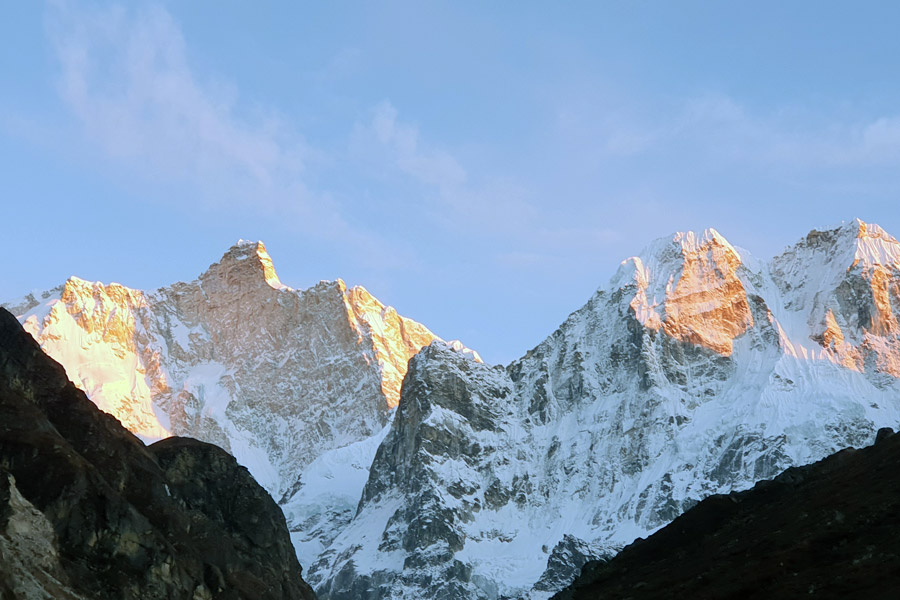
Kanchenjunga is the third-highest mountain in the world, lying on the border between Nepal and India. Renowned for a panorama of beautiful landscapes, it has remote beauty and challenging trails that draw both trekkers and climbers. The region boasts different flora and fauna, deep valleys, and majestic views of the towering peaks.
These climbing routes to Kanchenjunga offer everything from lower-altitude treks to high-altitude and expeditionary treks that afford different mountain vistas. Be it through lush forests or rocky terrain, the views of the snow-capped summit are nothing short of breathtaking.
Importance of Choosing the Right Season for Trekking
- Weather Conditions: The right season means good weather; clear skies and moderate temperatures make it easier and less dangerous to trek.
- Trail Accessibility: The conditions of the trails also vary with the seasons. Some routes may be blocked with snow or mud in some seasons, making them impassable or more challenging to cross.
- Crowding on the Trails: The trails will be much more crowded during peak season, especially during autumn, whereas going during the off-season might be better for those who like it when there are fewer people.
- Safety: Weather conditions may be extreme during monsoon rains or winter freezes, involving increased risks of accidents and altitude sickness.
- Scenic views: Because of less cloud formation, the mountain ranges surrounding Kanchenjunga are clearer, making them perfect for trekking.
- Wildlife and flora: Much of this region's biodiversity will fall under one variety of flora and fauna because it alters with time, as do the different seasons.
- Physical and Mental Preparation: Each season has different challenges, so choosing the best time according to your physical condition and experience in trekking can make the adventure more enjoyable and less exhausting.
- Local Culture and Festivals: According to the season, trekkers may experience local cultural events or festivals, adding a unique cultural experience to the trekking journey.
Spring Trekking: March to May
Pleasant Weather and Clear Views
Spring is the best season to trek in Kanchenjunga because of its favorable weather conditions and clear skies. The temperatures are moderate during March-May, with warm days in a temperature range of 10° to 20°C (50° to 68° F) and cooler nights ranging between 0° to 5 °C (32° to 41° F). This brings perfect trekking conditions for most people, especially newbies, to high-altitude hikes.
The melting snow at higher altitudes makes the trails more accessible. The clear skies offer stunning visibility, allowing trekkers to enjoy crisp, unobstructed views of Kanchenjunga and the surrounding mountain ranges. The comfortable temperatures and breathtaking scenery make spring ideal for exploring this majestic region.
Ideal for Beginners and Experienced Trekkers
- Moderate Weather: During spring, the temperatures are moderate, and hence, the trek is easier for a beginner without any extreme heat or cold.
- Accessible Trails: The trails are generally clear and in good condition, thus being easier to navigate for beginners yet challenging enough for experienced trekkers.
- Fewer Weather Challenges: Unlike the winter or monsoon seasons, spring trekking avoids the risk of heavy snow or rain, and thus, beginners can enjoy their trek without additional challenges caused by extreme weather conditions.
- Variety of Routes: Spring is suitable for both lower altitude treks, ideal for beginners, and higher routes that are challenging, which experienced trekkers will appreciate for the stunning views and rugged terrain.
- Acclimatization: Spring has moderately warm temperatures, making acclimatization for trekkers pretty easy. This is especially true for novice high-altitude trekkers, but it is also good for seasoned ones who wish to push their limits up to higher altitudes.
- Comfortable Conditions of Trekking: Pleasant weather conditions allow trekkers at all experience levels to focus on the surroundings and thus enjoy a more agreeable and less exhausting trek.
Essential Gear for Spring Trekking
- Layered clothing (moisture-wicking base layer, fleece, waterproof jacket)
- Sturdy, waterproof trekking boots
- Sun protection (sunscreen, sunglasses, wide-brimmed hat)
- Trekking poles
- Water bottle or hydration system
- High-energy snacks
- Light sleeping bag (appropriate for moderate temperatures)
- Lightweight backpack
- First aid kit
- Camera or smartphone for photos
- Headlamp or flashlight
- Trekking map or guidebook
- Personal identification and permits
Summer and Monsoon: June to August
Fewer Crowds, Lush Scenery
Trekking during the monsoon season offers fewer crowds, providing a more peaceful experience. The rainfall brings vibrant greenery, with dense forests and river valleys at their most beautiful. Temperatures range from 15°C to 25°C (59°F to 77°F) during the day, with cooler nights between 5°C to 10°C (41°F to 50°F).
The humidity and rain bring a refreshing coolness to the air, and thus, despite the tough conditions, the trek would be comfortable. Lush surroundings and quietness will provide a very serene and absorbing trekking experience. For those seeking solitude and bonding with nature, the monsoon season provides an unbeatable adventure.
Challenging Conditions
- Heavy Rainfall: The continuous rain throughout the monsoon season makes trails slippery, escalating the chance of falls and increasing the physical demands of the trek.
- Muddy Trails: The rain has made the trails muddier, making them difficult to navigate. You must pay extra attention to every footfall to avoid slipping.
- Reduced Visibility: The heavy rain and fog obscure the view of mountainside visibility and diminish the experience of seeing Kanchenjunga and surrounding peaks.
- Increased Landslide Risk: Wet conditions in some regions can cause landslides, which is a risk factor in the trek.
- High Humidity: High humidity gives the impression of a tiring trek, as trekkers will feel a lot of sweating and discomfort.
- Cold Nights: While the daytime temperature is warm, the night temperatures can get chilly at high altitudes, adding a layer of discomfort.
- Insects and Mosquitoes: Wet conditions are also a haven for insects and mosquitoes, which may be a nuisance during the trek.
Essential Gear for Summer and Monsoon Trekking
- Waterproof trekking boots with good grip
- Waterproof clothing (jackets, pants, gloves)
- Quick-drying clothing
- Lightweight, breathable layers
- Waterproof backpack and gear covers
- Mosquito repellent
- Trekking poles for stability on slippery trails
- Lightweight sleeping bag (suitable for moderate temperatures)
- Rain poncho or tarp for extra protection
- Gaiters to keep water and mud out of boots
- First aid kit with extra blister care
- Sunglasses and sunscreen (for sunny days between rain showers)
- High-energy snacks and water bottles
- A headlamp or flashlight with extra batteries
- Waterproof camera or phone case
Autumn Trekking: September to November
Most Popular Season: Clear Skies and Dry Trails
Autumn is the most popular trekking season in the Kanchenjunga region. The skies are clear, the trails are dry, and the temperature is pleasant. The best time to trek is between September and November, with crisp air and spectacular visibility.
The temperatures range from 10°C to 20°C, or 50°F to 68°F, during the day and drop below 0°C to 5°C, or 32°F to 41°F, at night. The dry trails during this period make trekking easier, more pleasant, and much less problematic than in the monsoon season.
Perfect for Stunning Views and Wildlife Sightings
The autumn season brings views of Kanchenjunga and the surrounding peaks in all their glory. This is also one of the best times to spot wildlife, as warmer temperatures drive animals down from higher altitudes. The lush green landscapes turn into beautiful shades of yellow, orange, and red, simply unforgettable as a backdrop for trekkers.
Essential Gear for AutumnTrekking
- Layered clothing (moisture-wicking base layers, fleece, and a warm jacket for evenings)
- Lightweight, breathable clothes for daytime trekking
- Waterproof jacket and pants (for occasional rain)
- Trekking boots with good traction for dry trails
- Warm sleeping bag (suitable for cooler nights)
- Sun protection (sunscreen, hat, and sunglasses)
- Water bottles or hydration system
- Camera for capturing stunning views
- Trekking poles for stability on rocky paths
- First aid kit with essential supplies
- Snacks with high energy for long days of trekking
Winter Trekking: December to February
Snow-Covered Landscapes and Cold Conditions
Lush snow-covered landscapes and cold conditions in Kanchenjunga give one an unforgettable and unutterably unique experience. Snows adorn the landscape in winter, from December to February, creating a tranquil scene resembling a wonderland of snow.
Temperatures are known to drastically fall and rise from -5°C to 5°C or 23°F to 41°F during the day to a minimum of -10°C to -15°C (14°F to 5°F) at night during high altitude. The trails are covered in snow, and icy conditions make trekking more difficult, requiring extra caution and preparation.
Ideal for Experienced Trekkers Seeking Solitude
Winter is the least crowded season for trekking in the Kanchenjunga region, and thus, it is suitable for trekkers who seek solitude and a more peaceful experience. The trails are covered with snow, and the surroundings are quiet, giving the trekkers a tranquil environment. However, due to the extreme conditions, it's only suitable for experienced trekkers who are prepared for the cold and terrain challenges.
Essential Gear for Winter Trekking
- Insulated, waterproof trekking boots
- Warm, layered clothing (thermal base layers, fleece, down jacket)
- Waterproof, windproof outer layers to protect against snow and wind
- Heavy-duty sleeping bag rated for sub-zero temperatures
- Gaiters to prevent snow from getting into boots
- Trekking poles with snow baskets for better stability on snowy paths
- Thermal gloves, hat, and scarf
- Sun protection (high-altitude sun can be intense even in winter)
- High-energy snacks to maintain energy in the cold
- Extra batteries for headlamps and cameras (cold weather can drain them quickly)
- Emergency survival kit, including a space blanket and extra clothing
Comparing the Seasons: Which Season is Best for You?
Spring (March to May)
Pros:
- Mild temperatures and clear skies
- Ideal for both beginners and experienced trekkers
- Stunning views of Kanchenjunga and surrounding peaks
- Accessible trails as snow begins to melt
- Lush landscapes with blooming flowers and vibrant greenery
Cons:
- The weather can be unpredictable at higher altitudes
- It can get crowded in popular trekking spots
Summer and Monsoon (June to August)
Pros:
- Fewer trekkers, offering a more peaceful experience
- Lush, vibrant green landscapes
- Less crowded trails and quieter surroundings
Cons:
- Heavy rainfall, slippery and muddy trails
- Increased humidity and fog, reducing visibility
- Risk of landslides in certain areas
- Challenging trekking conditions for beginners
Autumn (September to November)
Pros:
- Clear skies and dry trails for easy trekking
- The best season for stunning views and wildlife sightings
- Comfortable temperatures for trekking during the day
- A most popular time for trekkers, offering a great community atmosphere
Cons:
- It can be crowded, especially on popular trekking routes
- Nights get colder, especially at higher altitudes
Winter (December to February)
Pros:
- Snow-covered, picturesque landscapes
- Perfect for those seeking solitude and a peaceful trekking experience
- Few trekkers offer a tranquil environment
Cons:
- Freezing temperatures, especially at night
- Challenging trekking conditions with snow and ice
- Requires advanced skills and experience due to harsh weather and conditions.
How to Choose Based on Your Experience and Preferences
- Beginner Trekkers: Spring and Autumn are the best seasons for beginners because of the moderate temperatures, clear skies, and accessible trails. Spring has milder weather conditions, while Autumn offers the clearest views and more stable conditions.
- Experienced Trekkers: The more challenging conditions are found during Winter and Monsoon. In winter, one needs to enjoy solitude and can deal with icy and snow-laden paths. The monsoon season is less touristy, but one will have to make do with mud-soaked, slushy paths and sometimes fog and rain.
- Nature and Wildlife Enthusiasts: Nature lovers will adore autumn for its wildlife and fall colors. Spring offers a very colorful flora and excellent visibility for those into photography and scenery.
- Adventure Seekers: For adventure lovers who like quieter and off-beat paths, Monsoon or Winter may be an option. They are less crowded but bring along added risks and challenges, for which prior planning must be meticulous.
Conclusion
The best time to trek Kanchenjunga depends on a trekker's experience and what one prefers: clear skies, solitude, or vibrant landscapes. To make the trek successful, plan in advance, keep fit, acclimatize well, and pack smart.
Including a professional guide in your team, such as one from Dolpo Caravan Treks, assures the safety and quality of the experience. Respect the environment and follow the customs of the locals, and your journey to Kanchenjunga will be an unforgettable adventure, whatever the season.
FAQs
1. What is the best time to trek Kanchenjunga?
The appropriate time to trek Kanchenjunga is during spring from March to May and autumn from September to November. Both seasons usually have clear skies, moderate temperatures, and beautiful landscapes suitable for trekking. Spring offers mild weather, whereas Autumn brings clearer visibility and dry trails.
2. Can beginners trek Kanchenjunga?
Yes, it is possible for a beginner to trek Kanchenjunga, but in Spring, the weather is mild, and the trails are better than during other seasons. The altitude, however, would require good physical health and acclimatization even then. Be prepared, and take up a guided trek, considering your safety.
3. Is it safe to trek Kanchenjunga during the monsoon season?
However, trekking in June, July, and August in Kanchenjunga might involve risks due to heavy rainfall, trail sliding, and/or slides. Although there won't be a single human being along the way, the weather doesn't give a fine spell: visibility is low and worse. This season invites well-experienced trekkers who can manage most hard conditions.
4. How cold does it get during the Winter season in Kanchenjunga?
The temperatures can drop to below freezing, and high-altitude snow may make following the trail difficult. Also, very chilling nights have temperatures as low as -15°C/5°F; thus, this period is suitable for trekking only in instances of prepared, experienced trekkers.
5. Do I need a guide for trekking Kanchenjunga?
While it's not mandatory, hiring a guide is highly recommended for trekking Kanchenjunga. A guide ensures safety, helps with navigation, and supports acclimatization. They also provide valuable insights into the local culture and terrain, making the experience more enriching and enjoyable.
6. What should I pack for a Kanchenjunga trek?
The packing list for Kanchenjunga includes essential clothes for various weather conditions, including layered clothes, waterproof jackets, and strong trekking boots. Remember to include a cold-weather sleeping bag, trekking poles, and sufficient food and water for the journey in your luggage. Your packing list depends on the season and seasonable conditions.

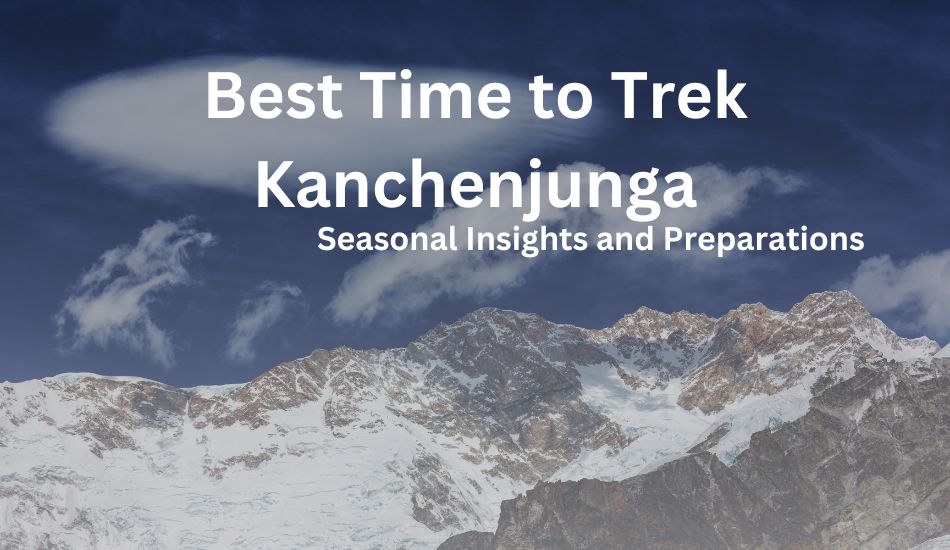
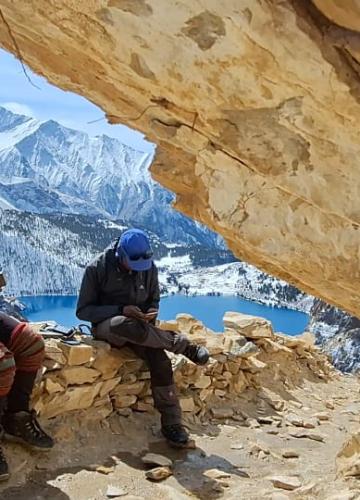
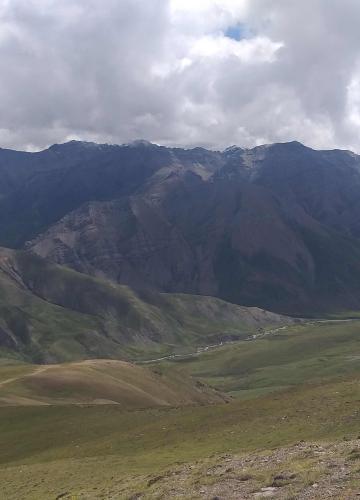
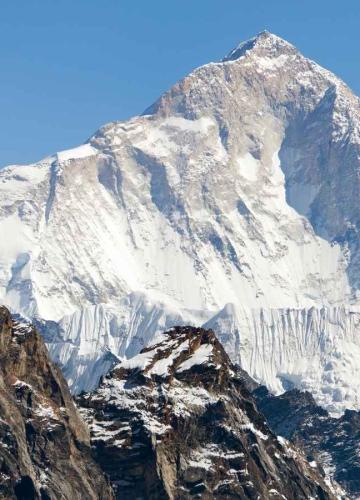
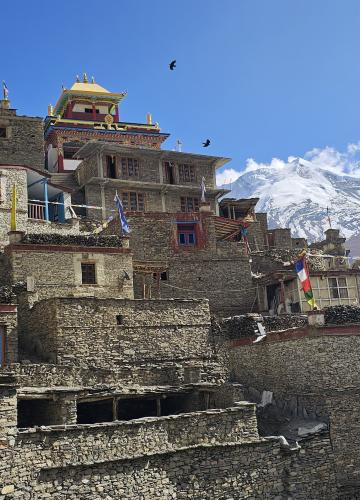
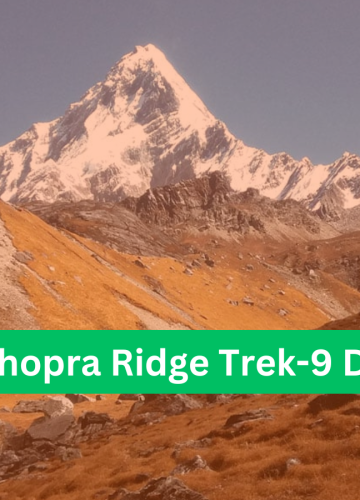

Leave Your Comment